Circuses, Rallies, and Soldiers: Photographs of Early-20th-Century American Clans
In over 100 vintage photographs, Hunt’s Three Ring Circus: American Groups Before 1950 explores how individuals in the early 20th century assembled into groups, linked together by experiences as official as military service or loose as a shared appreciation for the accordion.

In over 100 vintage photographs, Hunt’s Three Ring Circus: American Groups Before 1950 explores how individuals in the early 20th century assembled into groups, linked together by experiences as official as military service or loose as a shared appreciation for the accordion. The exhibition is organized by the International Center of Photography (ICP) with W. M. Hunt / Collection Blind Pirate and installed in the 1285 Avenue of the Americas Art Gallery. ICP is currently in-between homes as it closed its Midtown location this January and prepares to relocate to the Bowery next spring, but is continuing to host exhibitions in alternative locations.
Hunt’s Three Ring Circus is partly a tribute to collector W. M. Hunt, whose images are featured in the exhibition, as well as the Hunt’s Three Ring Circus pictured in a 1931 photograph by Edward J. Kelty. Clowns, acrobats, a band, and other performers sit and face the camera against a sun-faded banner. Kelty is one of the photographers highlighted in a show that mostly focuses on anonymous masses, as he worked mainly from the 1920s to ’40s as a banquet and theatrical photographer who made time for a couple of annual cross-country trips documenting circuses and sideshows.

Many of the exhibit’s photographs were displayed in 2012 at the Houston Center for Photography, in 2013 at Foto/Inudstria in Bologna, and in 2014 at Recontres de la Photographie in Arles, France, but this is their first time on public view in New York City. Hunt has a good vision for the odd in historic photography: a 2011 book from Aperture —The Unseen Eye — concentrated on images where the subjects’ eyes are hidden. The installation space at 1285 Avenue of the Americas Art Gallery isn’t the most inspiring, being a series of free-standing walls in a busy office tower lobby. However, each of the salon-style walls has some unexpected scene. Five people pose on a log; five men wear sweaters marked with a big “T.” Seven people stand on a ladder in the 1860s, 12 balance in a pyramid, and seven stand with crossed arms. There are no details on how these people know each other and came to assemble as a tribe, just expressions of belonging.

Some of the most stunning photographs are aerial views of soldiers — especially those by Arthur Mole and John D. Thomas, who, during World War I, became experts on photographing groups from an 80-foot tower, the individuals arranged in shapes like the Liberty Bell, the US Shield, the Statue of Liberty, and even Woodrow Wilson. Whether looking at Mole and Thomas’s photographs, intended to rally national spirit, or at ambiguous captures by anonymous photographers of baptisms and the standard student and First Communion portraits, there’s something intriguing about all these people in orderly rows or chaotic crowds and rallies. The exhibition doesn’t argue for any meaning other than an appreciation of the way that people tend to group themselves, and doesn’t go too in-depth as to why the early 20th century was a time of particular enthusiasm for the group photograph, although appearing on film still a novelty. In the business lobby setting, with modern groups of people in suits and heels gliding on all sides towards the elevator banks, you can glance from the sepia and black-and-white photographs to the present-day, and consider how this impulse to group endures.
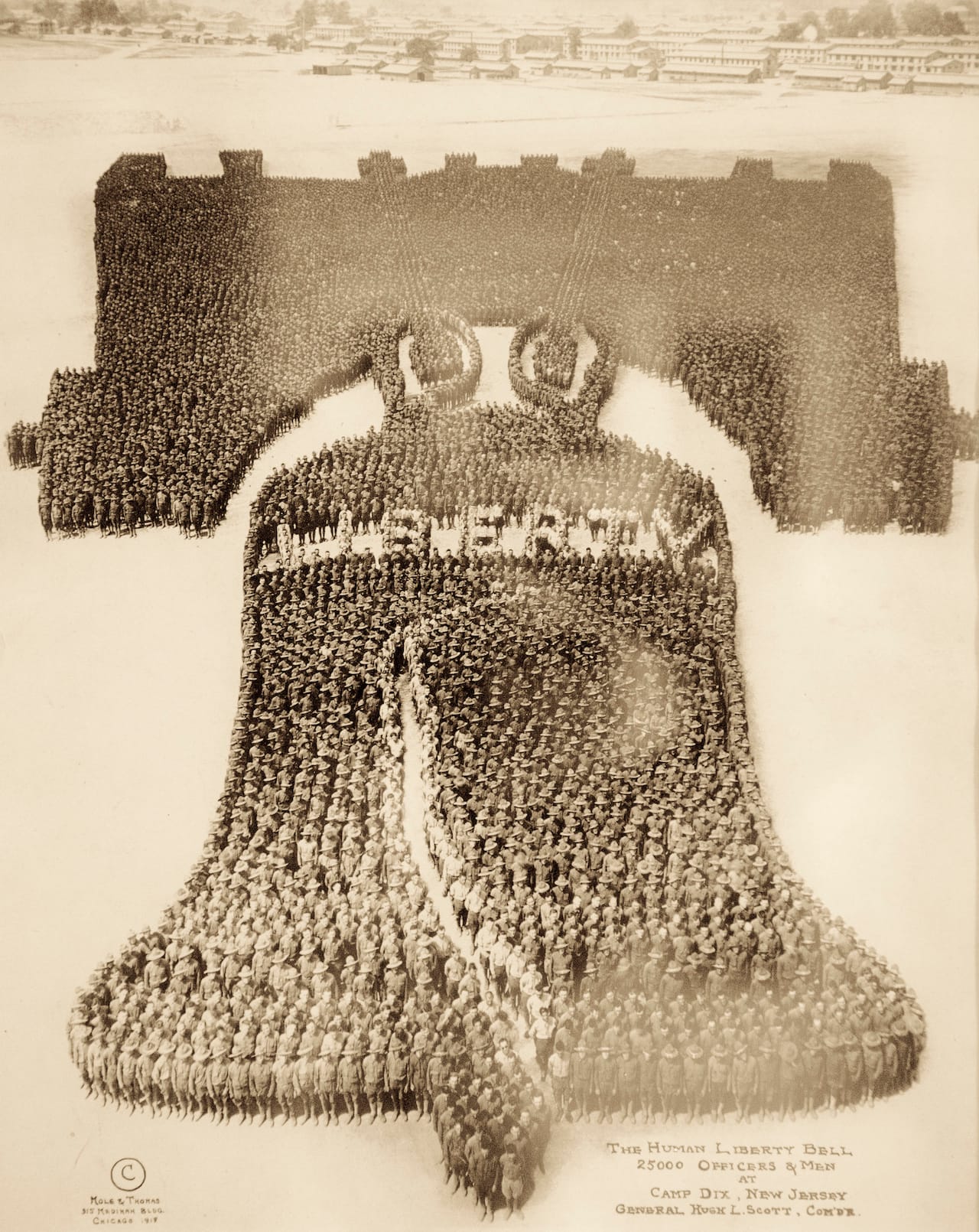
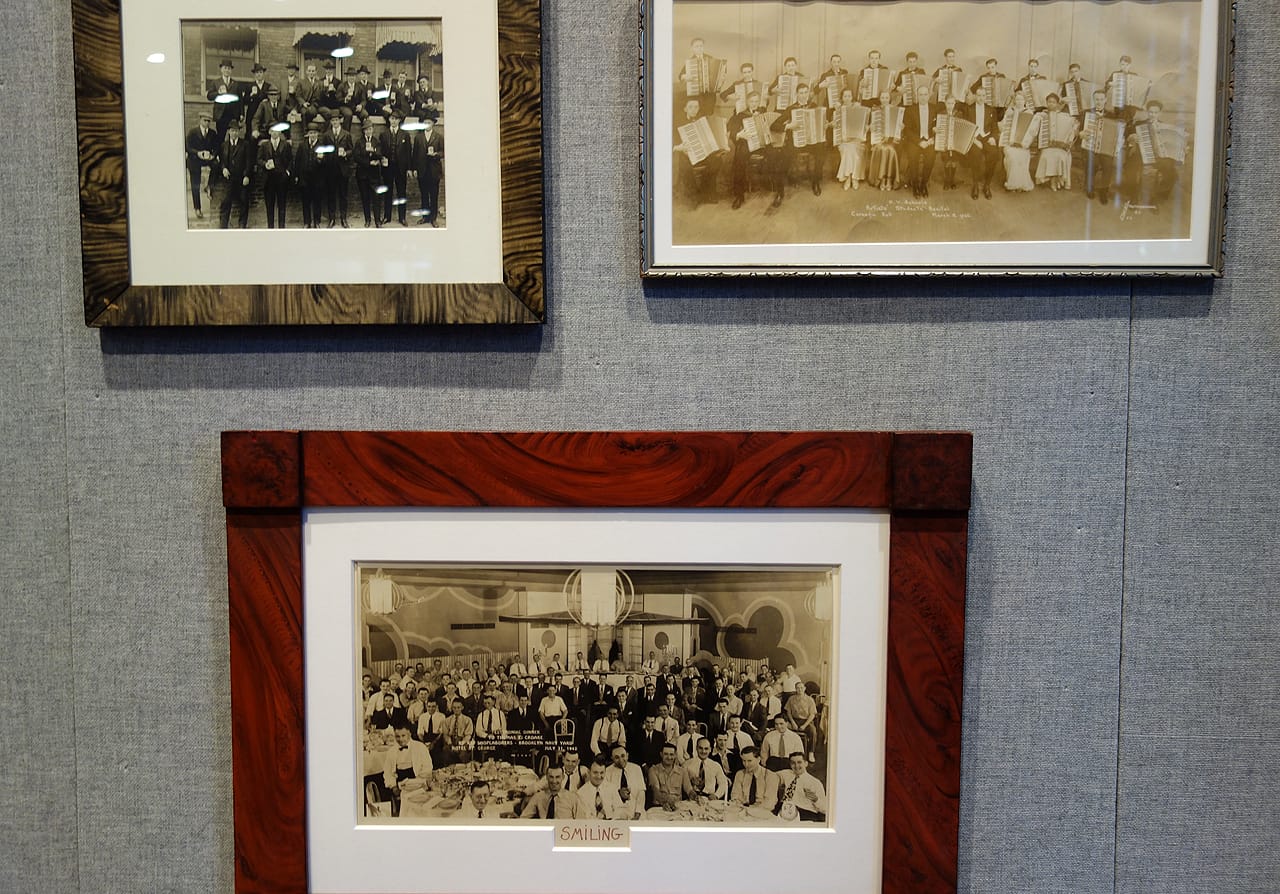
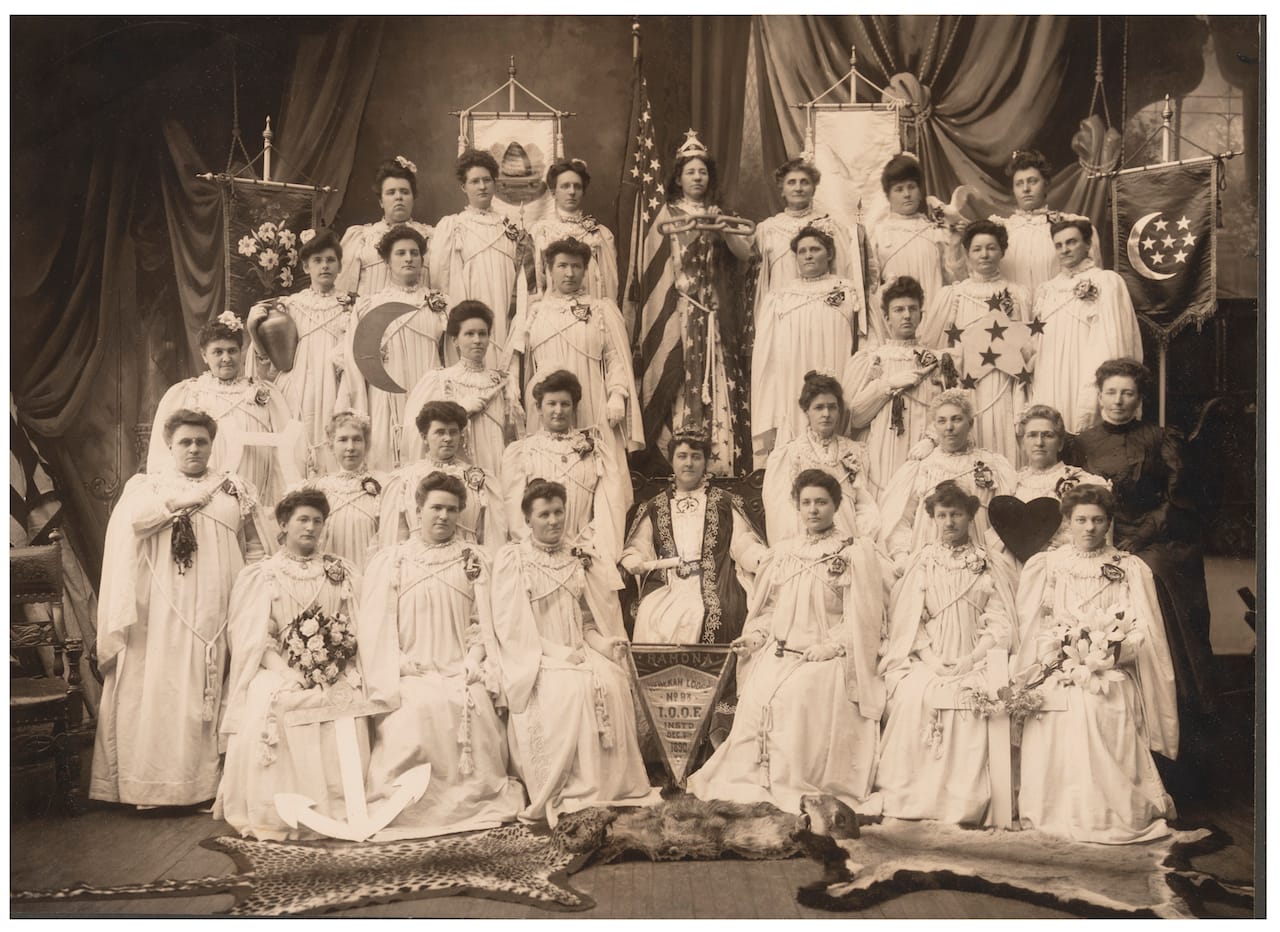
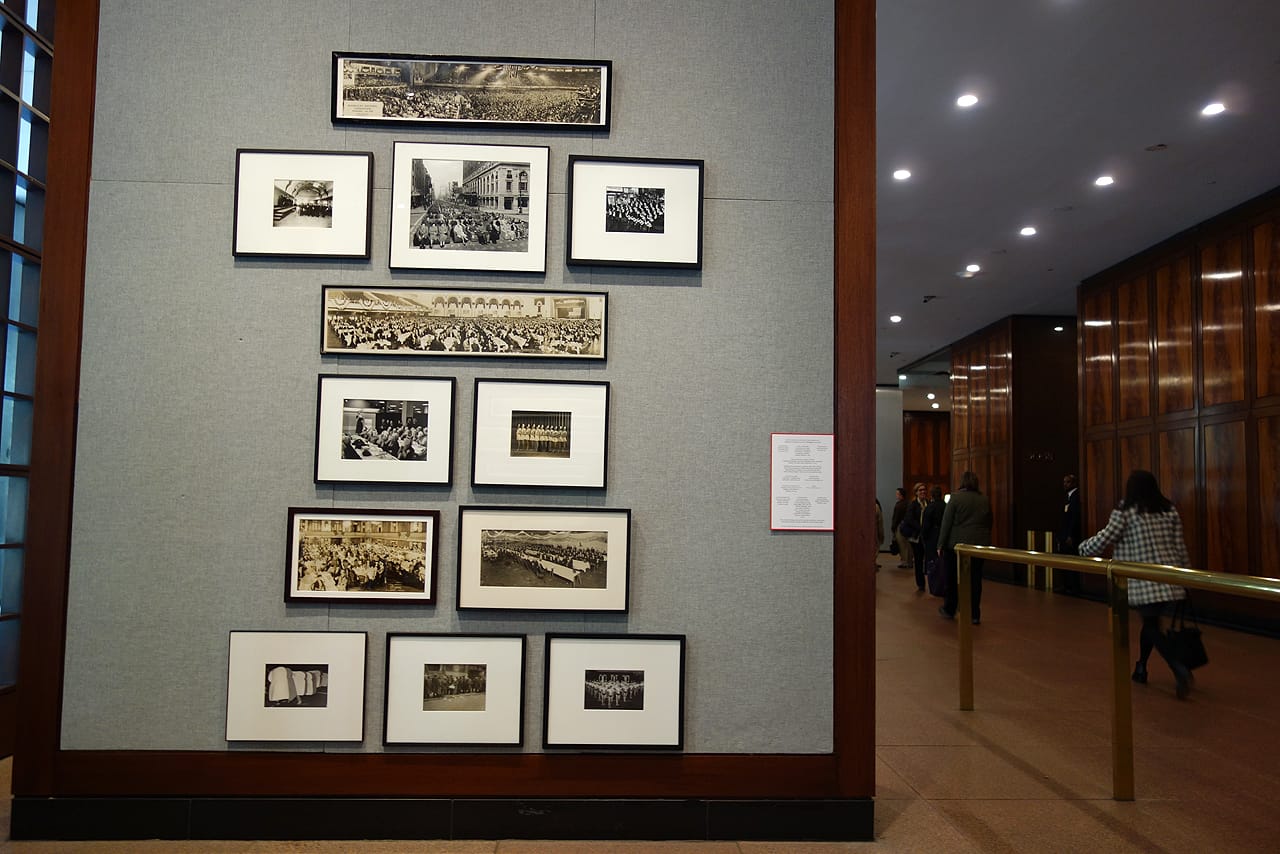
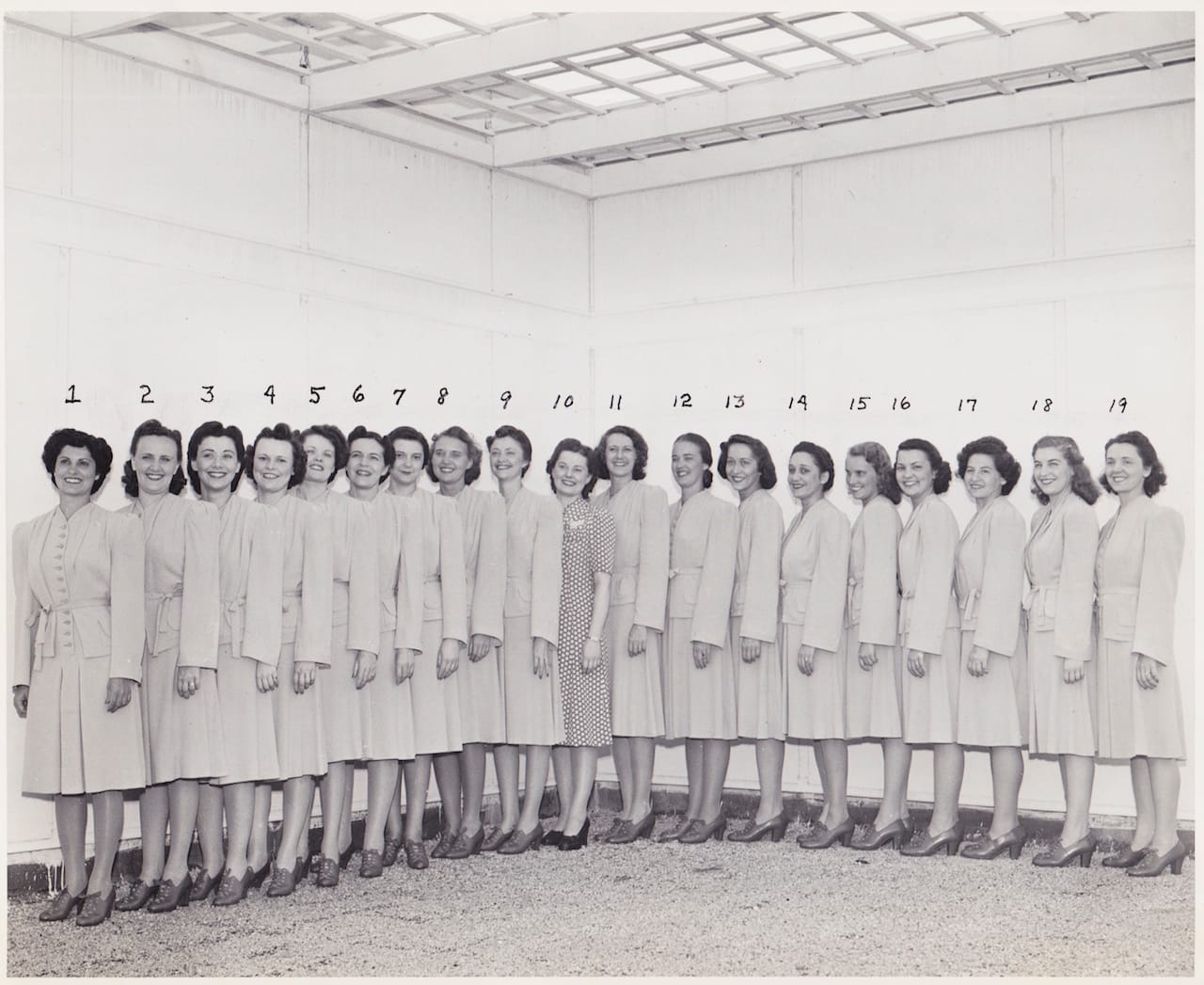
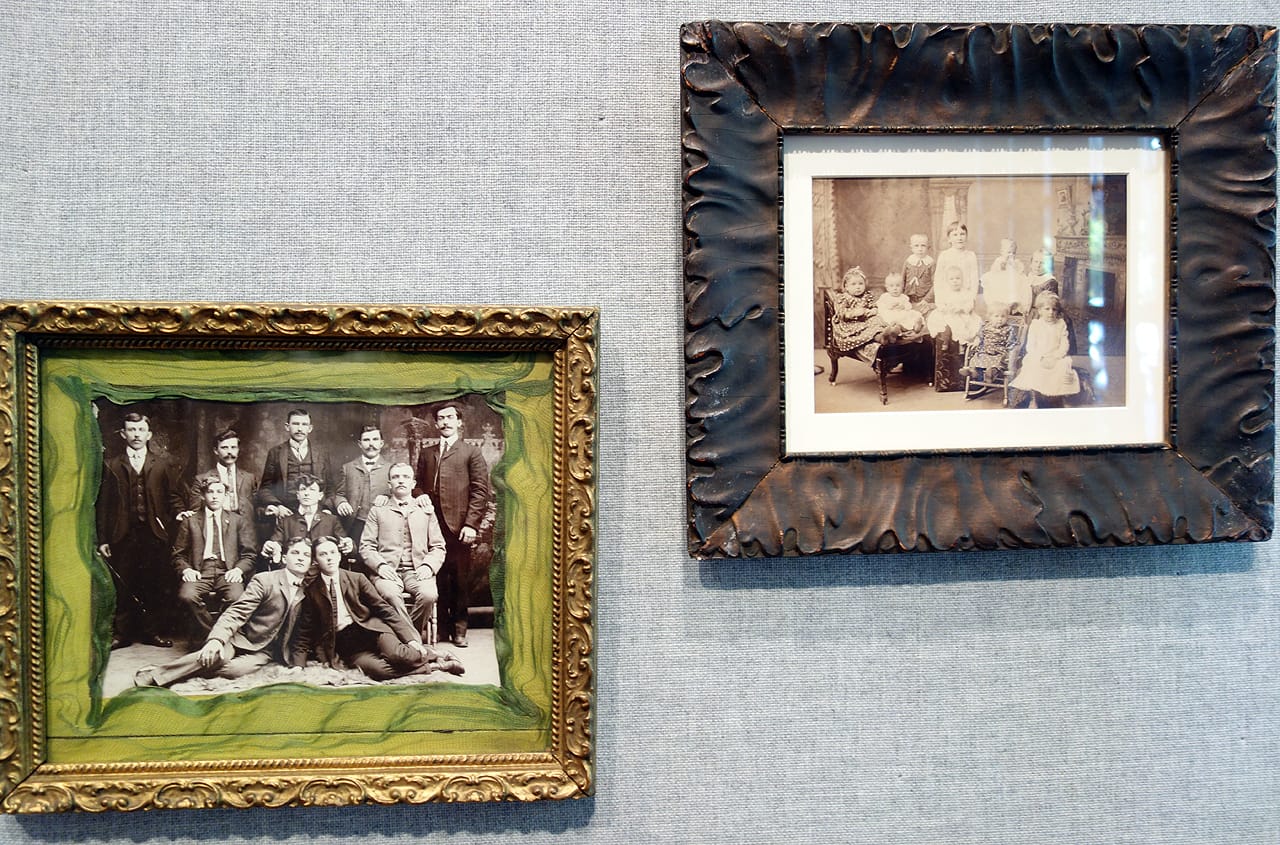


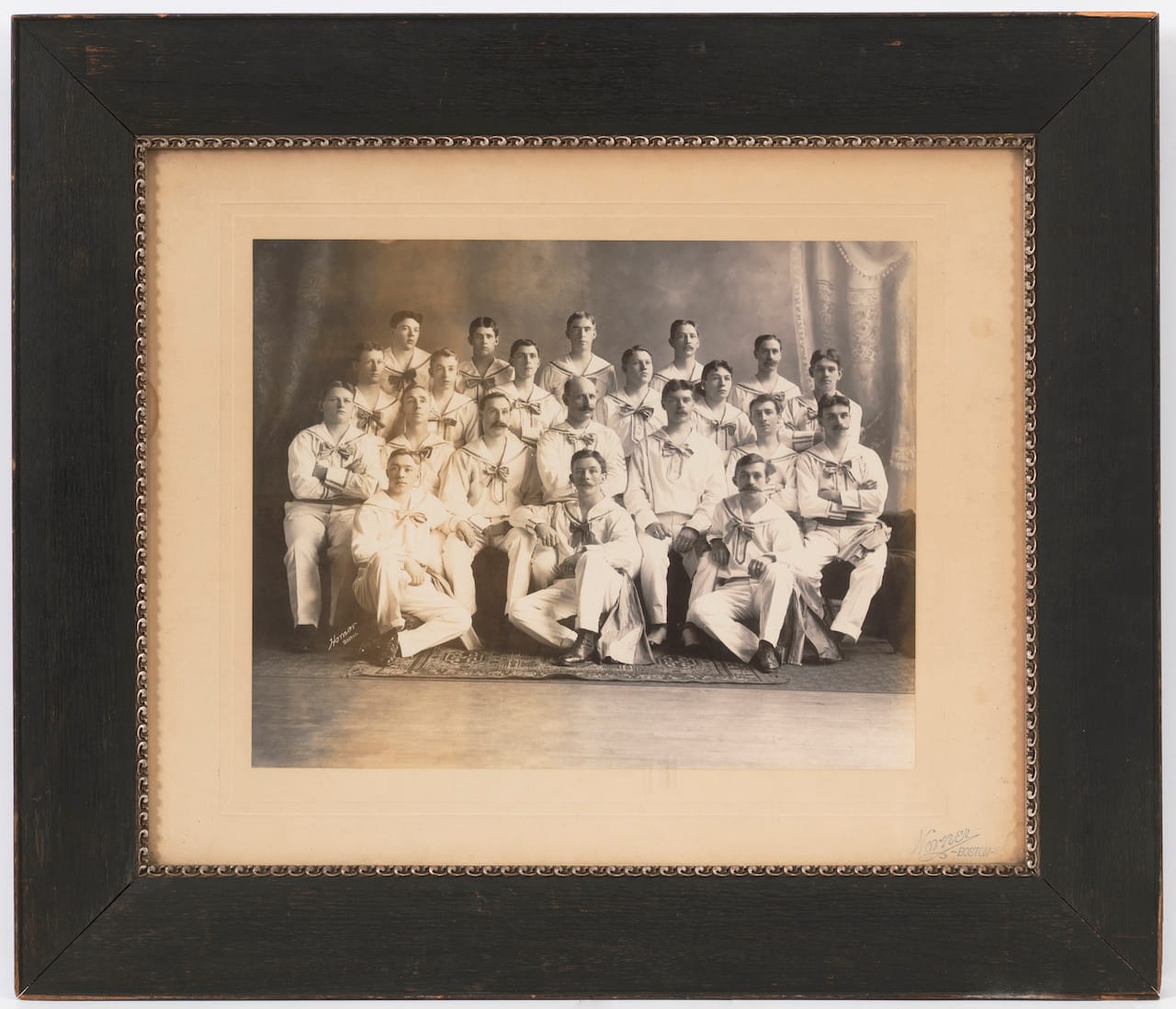
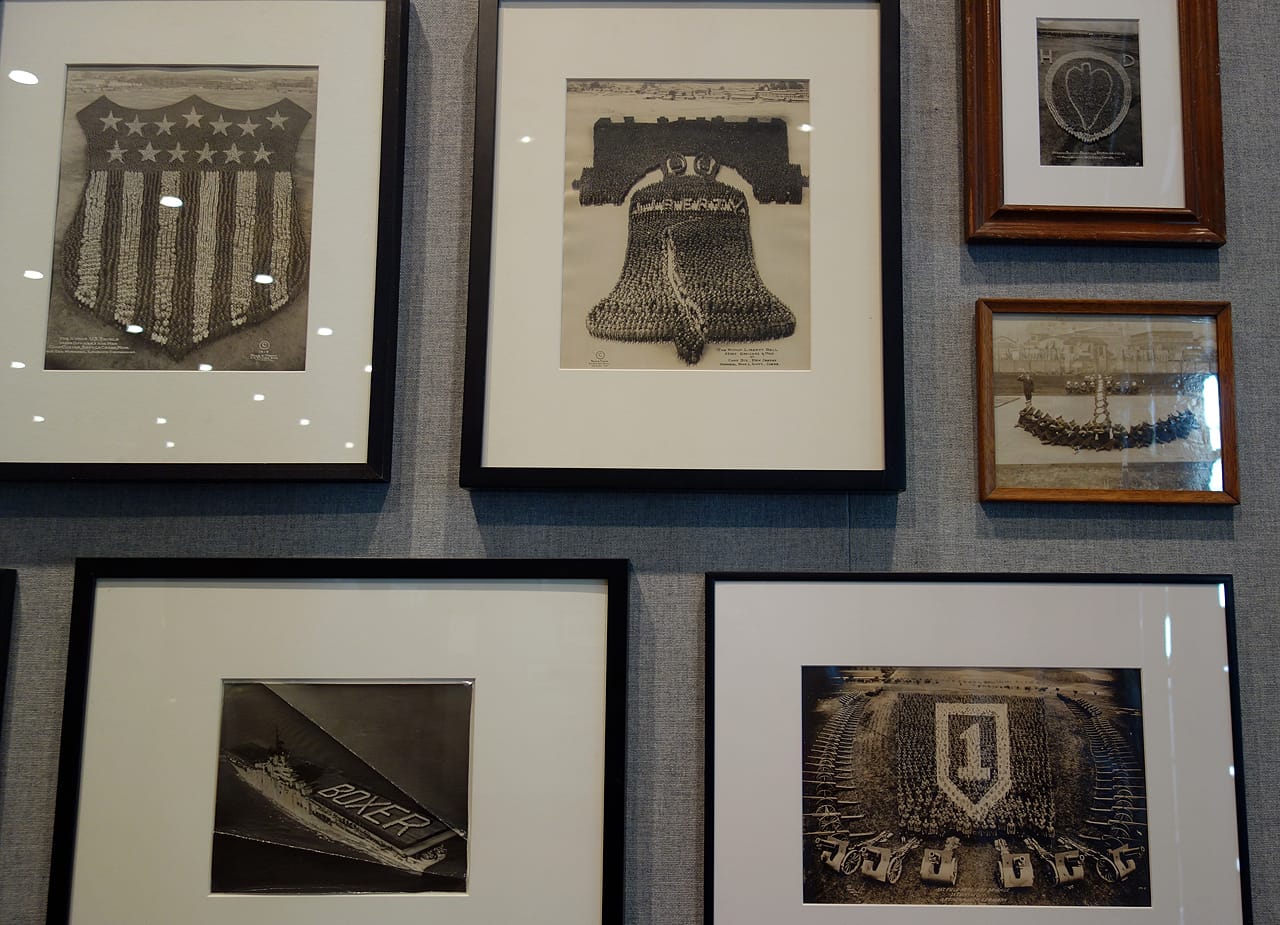
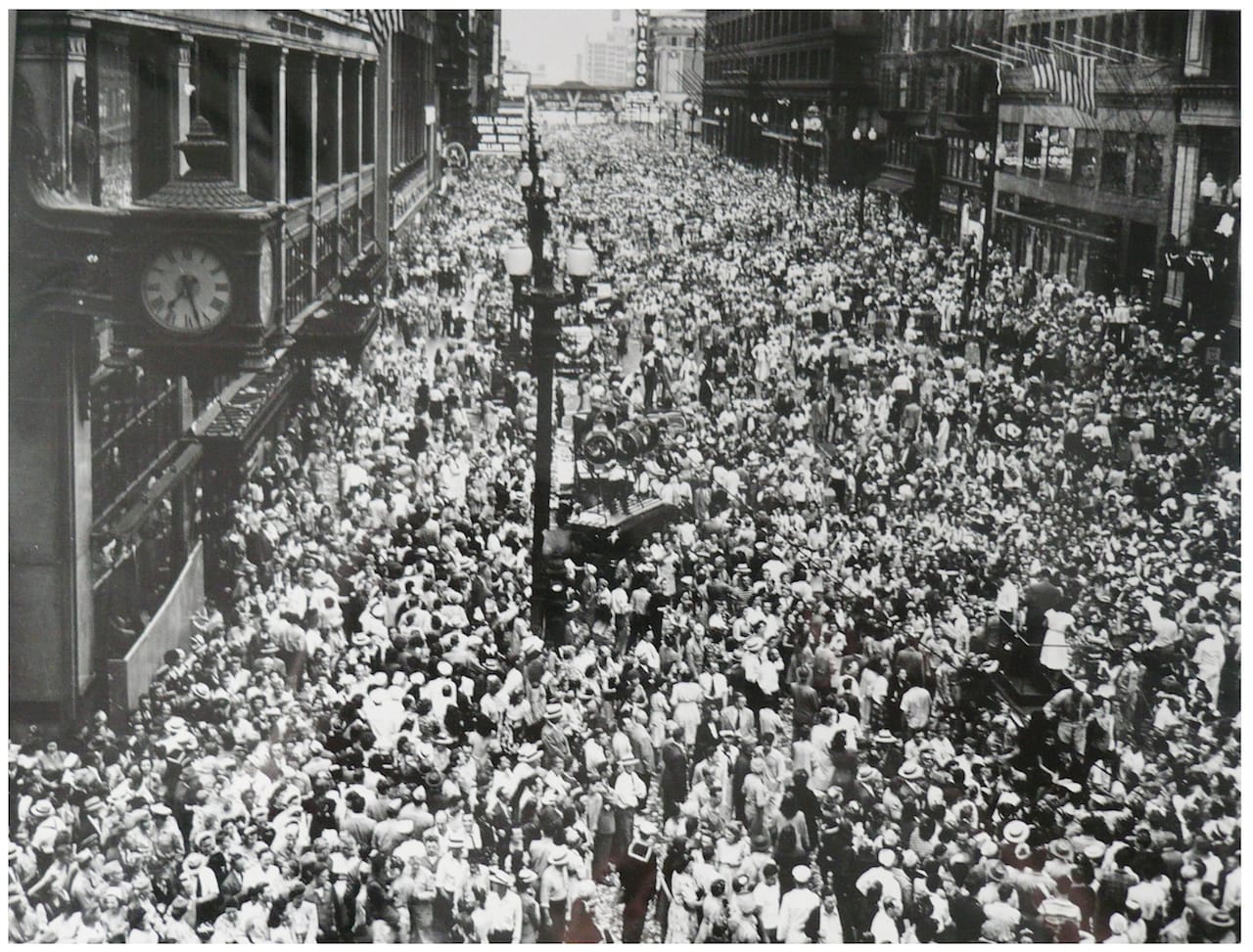

Hunt’s Three Ring Circus: American Groups Before 1950 continues at the 1285 Avenue of the Americas Art Gallery (1285 Avenue of the Americas, Midtown, Manhattan) through January 8, 2016.





